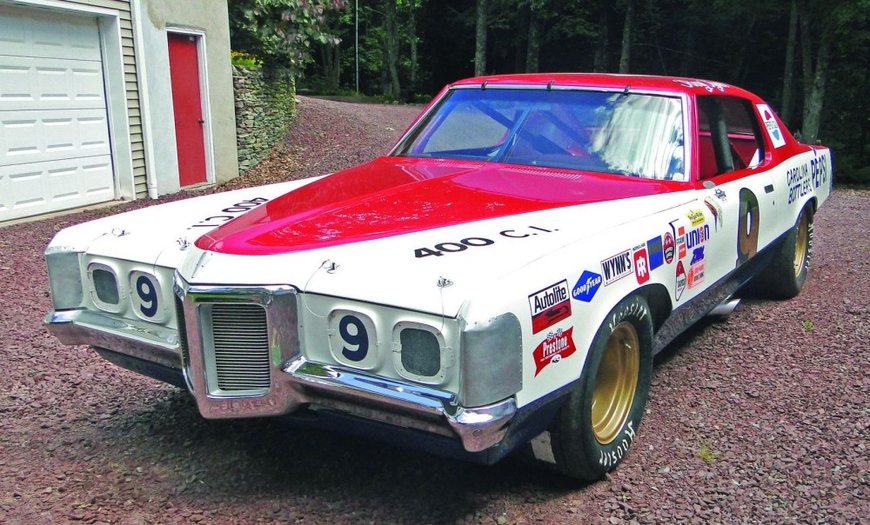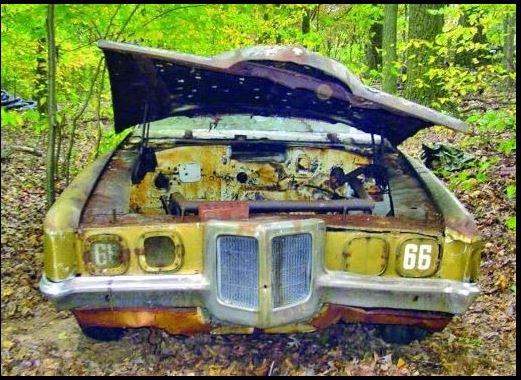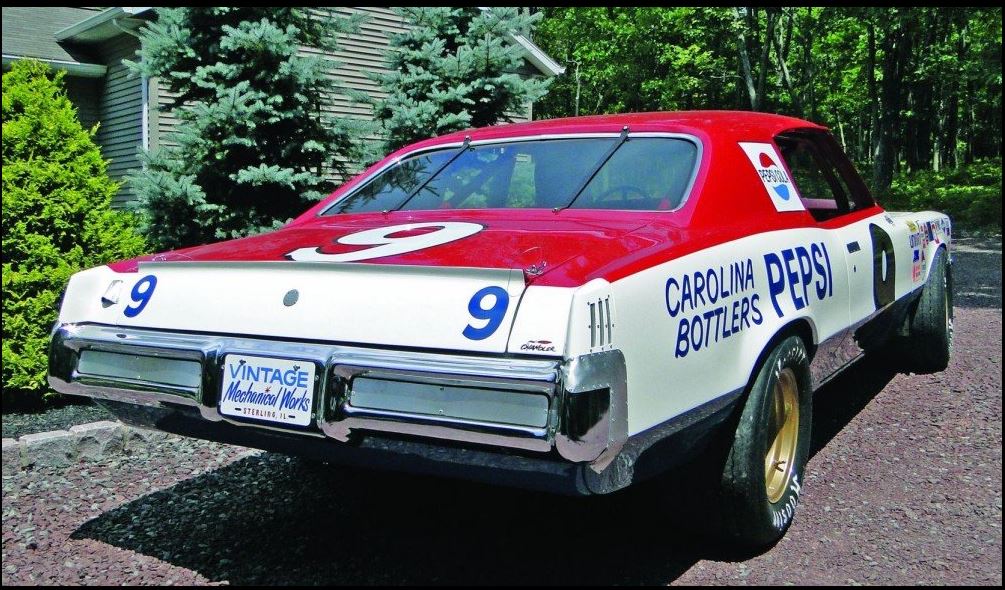An Independent's Tale
Racing history rediscovered in a 1969 Pontiac Grand Prix
THE CAR RECENTLY VISITED THE SIMEONE MUSEUM IN PHILADELPHIA, PA
CLICK HERE FOR THE SOUND OF PONTIAC POWER
CLICK HERE FOR THE SOUND OF PONTIAC POWER
Just like other motorsports, NASCAR has its legends: Petty, Pearson, Allison, Earnhardt, Baker and Yarborough, to name but a few. But there are other drivers that many overlook. Today, they are called "start and parks," but it wasn't long ago when they were known as the independents: Guys you've likely never heard of, who were supported by local business, a few volunteer crew members and lots of heart. Rarely a threat to win, but still an intricate part of every contest, they were guys like Dick May, Jimmy Means, Cecil Gordon, Frank Warren, Henley Gray and William Leroy Tyner.
Better known as Roy, Tyner's racing career started on a bullring in Fayetteville, North Carolina, when he was in his early teens. He was often erroneously reported as a Lumbree Indian since his cars generally carried the profile of an Indian, or were scribed with The Flying Indian or The Wild Indian. Best described as a chassis man--one who intuitively knew what a car needed to go fast--Roy's trip into NASCAR lore began in 1957, at the age of 23.
During that first season, he finished in the top 10 twice in just 10 starts. In the four years that followed, Roy amassed nine top five finishes and 23 top 10s, but he never ran an entire season. From the '63 through '68 seasons, Roy collected just five more top fives and 42 top 10s--he even finished 10th in points at the conclusion of 1968 (he started 48 of the season's 49 races). Two things eluded him: wins and consistency, both a product of often second-rate equipment.
By the end of 1968, Roy had switched to a Pontiac GTO (a '66 with '67 sheetmetal); he stuck with the marque when the '69 season opened at Georgia's Macon Raceway. What made this particularly unusual was that Roy showed up at the paved half-mile with a new Grand Prix-bodied chassis, rather than a smaller Le Mans. Perhaps just as stunning was the car's red, white and blue paint scheme, with Pepsi's Carolina Bottlers as his backer. Yet Roy only started 21 of the season's 54 races and managed to finish just eight, his engine expiring eight times; his best finish was a 10th at Bristol in Tennessee.
But perhaps more important to Roy than winning was his relationship with the Holy Angels Nursery, a hospital still located in Belmont, North Carolina, that specializes in treating children with severe mental and physical birth defects. Despite his minimal racing budget, Roy would always donate a portion of his winnings, regardless of his finishing position. His charity, perhaps, was what won him a spot on the cover of Stock Car Racing magazine's August 1969 edition. For 1970, Roy started eight races with his Pepsi Pontiac, managing to finish just three times before switching to Ford and Dodge for his last six starts in the NASCAR Grand National Series (as it was then known). The best his Pontiac could muster was an eighth. His Grand Prix was sold and later, unceremoniously, parked in a field in Delaware.
In all, Roy started 311 NASCAR races, and failed to win any of them. After he retired from racing, he opened an auto repair shop and eventually became the "show car" driver for one of Junior Johnson's Budweiser Chevrolets in the Eighties. Divorced and nearly forgotten, he died on February 23, 1989, under mysterious circumstances: a gunshot wound to the head while he was in his truck, which had been set ablaze.
History, however, often has a way of being rediscovered. A gentleman named Bill Tower happened upon a blue and gold 1969 Grand Prix carrying the number 66 in that Delaware field, purchased it, and eventually listed it for sale in a 1991 edition of Hemmings Motor News, catching the attention of Pontiac Grand Prix aficionado and restorer Keith Vrabec.
"There were only so many Pontiacs racing NASCAR in the late Sixties--and only one Grand Prix--and when we started to look past the blue and gold paint, a different picture developed. One thing led to another, and next thing I knew, I had Roy's car," recalled Keith. "I was able to get in touch with James Lee--one of his crew members--who was able to help confirm its identity, thanks in part to some strange build characteristics. Among them were the tilt column and power quarter windows. They called it Roy's Limousine."
In 2009, Keith sent Roy's Pontiac to Glenn Sedig of Vintage Mechanical Works in Sterling, Illinois. In less than a year, the car was completed to 1969 as-raced condition, and Keith has plans in place to attend a few vintage racing events this year.
"It's a historic car on so many different levels, one that really deserved to be saved. It was perhaps the first car to ever carry Pepsi sponsorship in NASCAR (Editor's note: Corporate sponsorship in 1969 was still relatively unheard of). This is still the only car to ever start and finish a NASCAR Cup race on the same set of tires--I believe it was at Charlotte. And it was the only Grand Prix to ever run the circuit during this period."
This article originally appeared in Hemming's Muscle Machines, October, 2010 - Matthew Litwin
MONTHLY MEETINGS HELD 1ST TUESDAY OF EACH MONTH
AT AUTO PERFORMANCE CENTER
CLICK THE LOGO FOR THEIR WEBSITE
TARHEEL TIGERS OF RALEIGH, NC
MISSION:
Preservation, restoration, and enjoyment of all years, models, and types of Pontiacs
Annual car show whose proceeds fund area organizations in need
MISSION:
Preservation, restoration, and enjoyment of all years, models, and types of Pontiacs
Annual car show whose proceeds fund area organizations in need
WEBSITE LAST UPDATED 03.27.16






